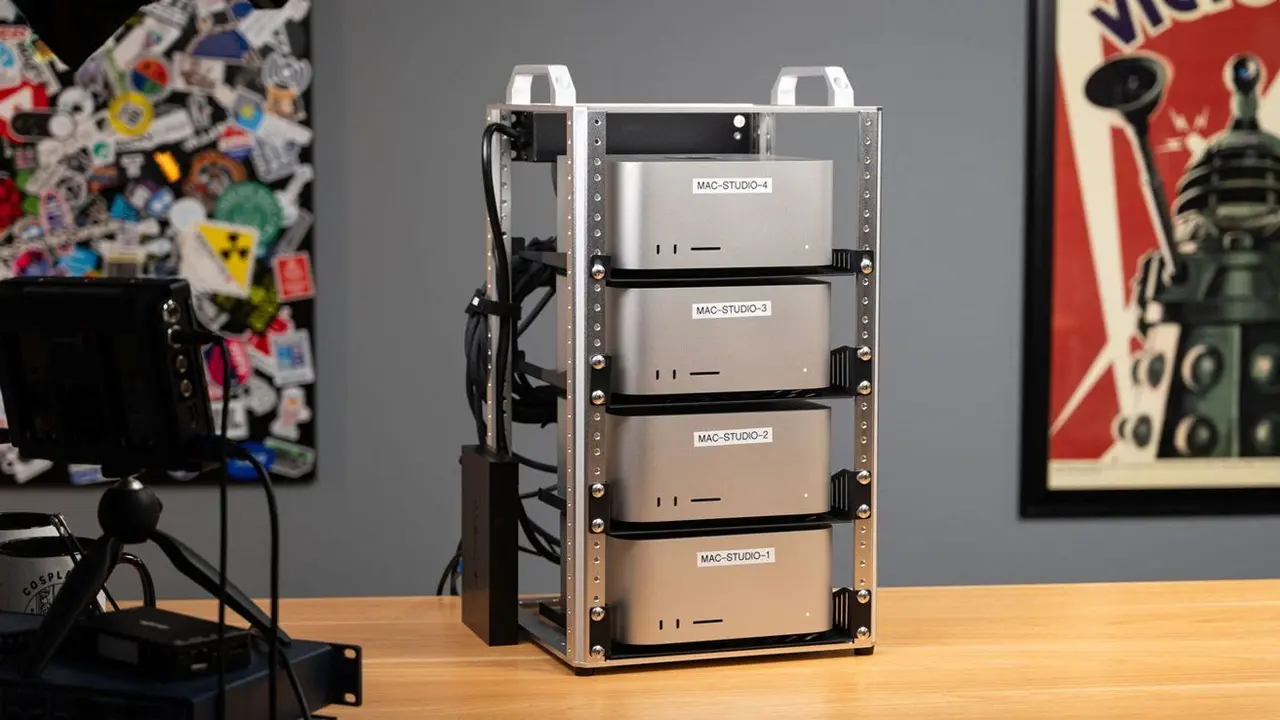Tech Giants Unite to Solve Data Fragmentation with Open Semantic Interchange Initiative
3 Sources
3 Sources
[1]
Salesforce, Snowflake and other tech giants team up to solve one of the biggest business data problems today
Salesforce likens the initiative to the Rosetta Stone of business data In recognition of the rise of agentic AI and the shift away from traditional dashboards and reports, Salesforce and Snowflake have teamed up with BlackRock, dbt Labs and RelationalAI to change things for the better when it comes to collaboration. Together, the group is launching Open Semantic Interchange (OSI), which Snowflake describes as a vendor-neutral framework that allows different platforms to talk to one another in the same language. The launch of OSI comes as companies struggle with vendor lock-ins, which create silos and limit the potential of AI tools. "With the Open Semantic Interchange initiative, we are proud to be leading the charge alongside our partners to solve a foundational challenge for AI - the lack of a common semantic standard," Snowflake EVP of Product Christian Kleinerman commented. The initiative's key goals are to improve interoperability, reduce complexity and boost AI adoption "by standardizing how semantics are defined and exchanged." It's also a futureproofing initiative in more ways than one - Salesforce cited Accenture research predicting AI agents will be the primary users of enterprise software by 2030, ahead of humans. "These new intelligent workers are only as effective as the data they can access and understand," Tableau Chief Product Officer Southard Jones explained. To support bi-directional metadata exchange, the OSI standardizes data metrics, dimensions, hierarchies and relationships. Snowflake highlighted the five core principles of OSI: standardization (common language and structure); interoperability (easy exchange between tools); extensibility (adaptable to evolving needs); open source (collaborative development); and domain-specific models (to combine data from various sources). Jones likened the Open Semantic Interchange to the Rosetta Stone for business data: "By co-leading the Open Semantic Interchange with Snowflake and our partners, we're building the foundation every AI agent and BI application needs: a common semantic framework that preserves meaning across platforms."
[2]
The $1 trillion AI problem: Why Snowflake, Tableau and BlackRock are giving away their data secrets
Snowflake, Salesforce, dbt Labs and more than a dozen other technology companies announced Tuesday they will create a universal standard for how business data is defined and shared across platforms -- solving what executives call AI's most fundamental bottleneck. The Open Semantic Interchange (OSI) initiative brings together fierce competitors who have concluded that inconsistent data definitions across enterprise systems block AI scalability. The effort includes backing from BlackRock and participation from companies including Alation, Atlan, Blue Yonder, Cube, Hex, Honeydew, Mistral AI, Omni, RelationalAI, Select Star, Sigma, and ThoughtSpot. Together, they will establish the first vendor-neutral specification for semantic metadata -- a Rosetta Stone for business data. "We're not in the business of locking data in, we're in the business of making it accessible and valuable," Christian Kleinerman, Snowflake's executive vice president of product, told VentureBeat in an exclusive interview. "The biggest barrier our customers face when it comes to ROI from AI isn't a competitor -- it's data fragmentation." Every AI model fails when sales and marketing can't agree what 'customer' means The initiative tackles a problem that has plagued enterprises since the dawn of business computing but now threatens AI adoption: Every software system defines business metrics differently. A retailer's sales platform might classify an "active customer" as someone who purchased within 90 days, while its marketing system defines the same term as anyone who engaged with content in the past month. AI models trained on both systems produce unreliable predictions and destroy trust in AI-generated insights. "Picture a business training AI models to predict something like customer churn," Kleinerman explained. "When an AI model pulls data from both [systems with different definitions], it's going to end up with conflicting definitions. That inconsistency makes AI less accurate and harder to scale." This semantic chaos costs enterprises millions. Data and AI teams spend weeks reconciling conflicting definitions and reformatting data before AI projects can begin -- driving up operational costs and delaying time-to-market for AI applications. Many enterprises find the promise of AI as a productivity multiplier destroyed by the manual labor required to prepare inconsistent data. Tableau and Snowflake put competition aside to fix the data ecosystem The collaboration breaks traditional competitive dynamics in enterprise software. Tableau, Salesforce's business intelligence division that competes directly with several OSI participants, co-leads the initiative alongside Snowflake. "This initiative is transformative because it's not about one company owning the standard -- it's about the industry coming together," Southard Jones, Tableau's chief product officer, told VentureBeat in an exclusive interview. "The future of AI depends on trust -- and trust starts with consistent, reliable data." Jones revealed that Tableau will contribute its blueprint for a vendor-neutral semantic layer, built on decades of experience creating business intelligence tools. "Our work has always been about giving data clear business meaning -- defining metrics, business logic, and context in a way that people across the enterprise can trust. With OSI, we're taking that knowledge and codifying it into an open standard." The decision to pursue an open, collaborative approach acknowledges that proprietary semantic standards have failed. "What makes it a first of its kind is its focus on SQL-based analytical models and its inclusion of AI-specific metadata, such as custom instructions and synonyms," Kleinerman noted. Existing metadata standards like RDF and OWL lack the compilation engines necessary for modern AI applications. The technical blueprint promises immediate compatibility with existing tools OSI targets the semantic layer -- the business meaning of data rather than just its technical properties. The specification uses YAML file definitions, enabling immediate compatibility with existing tools like dbt's Semantic Layer. "Our support for this will be almost-immediate," Ryan Segar, dbt Labs' chief product officer, told VentureBeat. "Data and analytics engineers will now be able to work with the confidence that their work will be leverageable across the data ecosystem. Re-work and double work will be a thing of the past." The standard includes AI-specific features such as natural language synonyms and business terms. "Today, AI models are often forced to infer relationships from raw metadata, which can lead to misinterpretations and inaccurate outputs," explained Francois Lopitaux, ThoughtSpot's senior vice president of product management, in an exclusive interview. "By providing a universal, open standard, the OSI will give AI agents -- including our own Spotter -- a common language to understand business context." Major enterprises demand solutions as AI investments stall on bad data Enterprise demand for AI capabilities drives the urgency behind OSI. Snowflake reported that nearly half of new customers in Q2 fiscal 2026 chose the platform for AI capabilities, with over 6,100 customers using its AI offerings weekly. The company surpassed $1 billion in quarterly revenue for the first time in May, driven largely by AI-related demand. A dedicated partner taskforce has formed to deliver the first OSI specification, though executives declined to provide a specific timeline. "Initial customer response to OSI has been overwhelmingly positive," Kleinerman said, noting strong interest from organizations wanting early adoption. BlackRock sees immediate applications for the standard in financial services. "The Aladdin platform unifies the investment management process through a common data language across public and private markets," said Diwakar Goel, BlackRock's global head of Aladdin Data. "We are excited to be part of the Open Semantic Interchange to help establish a common, vendor-neutral specification that will not only streamline data exchange but also accelerate the adoption of AI and business intelligence applications across the financial industry." Standardized data definitions will intensify rather than reduce competition The initiative changes how software companies will compete. Executives argue that standardization will intensify competition by shifting the battleground from data definitions to innovation in user experience and AI capabilities. "Standardization isn't a commoditizer -- it's a catalyst," Jones argued. "Think of it like a standard electrical outlet: the outlet itself isn't the innovation, it's what you plug into it. Our focus is on being the most intelligent, intuitive, and powerful 'appliance' you can connect to your data." Tableau plans to accelerate development of what Jones calls "agentic analytics" -- AI agents that surface context, highlight opportunities, flag risks, and suggest next steps rather than just reporting numbers. "Semantic definitions transform AI agents from static tools into analytical partners," he said. ThoughtSpot's Lopitaux agreed: "While OSI will set a vendor-agnostic industry standard to semantic layers, we will continue to compete on product innovation, user experience across our entire platform, and delivering unprecedented customer value." The industry bets its future on cooperation over control OSI's success depends on maintaining vendor-neutral governance -- a challenge given the participating companies' varying market positions and strategic interests. "The whole point of OSI is that no single vendor controls it," Kleinerman emphasized. "Every member is responsible for maintaining their own mappings and integrations, and the value comes from the shared framework, not from any one company's implementation." Enterprise customers stand to gain the most: faster AI deployment, greater accuracy, and elimination of manual data reconciliation costs. Companies can preserve existing investments in semantic models while adopting best-of-breed technologies without sacrificing consistency. "When semantics are available everywhere, from anywhere, the place where they 'live' becomes less relevant," noted dbt Labs' Segar. "Built anywhere, leveraged everywhere." The technology industry has decided that AI's promise demands an unusual sacrifice: giving up proprietary control of how business data gets defined. The companies betting billions on AI have concluded that owning a piece of a working system beats controlling all of a broken one. "We encourage and welcome more companies to join," Kleinerman said, "because the more perspectives at the table, the stronger and more neutral the standard becomes."
[3]
Snowflake-led coalition targets data fragmentation with vendor-neutral semantic standard - SiliconANGLE
Snowflake-led coalition targets data fragmentation with vendor-neutral semantic standard Snowflake Inc. and a group of partners today launched the Open Semantic Interchange initiative, an open-source effort to standardize how organizations define and share business semantics across data and analytics platforms. The initiative aims to create a vendor-neutral specification for business metrics, dimensions and metadata that can be used consistently across business intelligence tools, data catalogs and artificial intelligence applications. The 17 initial participants include Salesforce, BlackRock Inc. and dbt Labs Inc. Data semantics describe the meaning and context of data relative to business concepts, processes and rules. For example, consistent semantics ensure that different systems and teams interpret terms like "customer," "revenue" and "operating margin" the same way. Many organizations manage business metrics across multiple BI and analytics systems, each with its own set of semantic definitions. That leads to duplication of effort and inconsistent definitions. The initiative is an effort to resolve those differences. "A strong request from customers has been to make semantic models interoperable," said Josh Klahr, director of analytics product management at Snowflake. "They want to make it easy for a model in one place to show up in another location, avoid the risk of vendor lock-in and think about interoperability for the long term." The effort will initially focus on analytics and BI use cases with an additional emphasis on enabling AI interfaces to work with consistent, verified data definitions. Work on the specification has just begun, with a working group defining the first version of a draft standard that's likely to be published within the next few months, Klahr said. Numerous technology- and industry-specific semantic standards already exist, with several administered by the World Wide Web Consortium. The standard is expected to build on existing approaches where possible, using widely adopted formats such as YAML to define metrics, hierarchies and relationships. "YAML will likely end up being the definition language," Klahr said. Snowflake said the initiative will probably be donated to either the Apache Software Foundation or the Linux Foundation. "It's early to say which because we want the working group to agree on what the licensing model will be," Klahr said, "but the plan is to be an open-source project." The company expects the list of participating vendors to grow rapidly. "There's lots of interest," Klahr said. "This is something that makes sense to everybody." Snowflake rival Databricks Inc. isn't a founding member, but "I would love for additional partners like Databricks to be part of the effort as well," he said.
Share
Share
Copy Link
Snowflake, Salesforce, and other tech companies launch the Open Semantic Interchange (OSI) initiative to standardize business data semantics across platforms. This vendor-neutral framework aims to improve AI adoption and solve data fragmentation issues.
Tech Giants Launch Open Semantic Interchange (OSI)
Snowflake, Salesforce, and a coalition of tech giants launched the Open Semantic Interchange (OSI) initiative. This vendor-neutral framework standardizes business data semantics across platforms, directly addressing a critical AI adoption bottleneck and resolving data fragmentation .
Combating 'Semantic Chaos' for AI
The initiative targets inconsistent business metric definitions across enterprise software. This "semantic chaos" undermines AI accuracy and trust, making models unreliable and less scalable. Snowflake's Christian Kleinerman stressed that conflicting definitions hinder AI deployment. OSI's goal: a 'Rosetta Stone' for business data, ensuring consistent meaning .
Universal Data Language & Collaborative Plan
OSI standardizes metrics, dimensions, hierarchies, and relationships, fostering interoperability, extensibility, and open-source development. It enables domain-specific models to combine data seamlessly . With 17 initial participants, it's a broad industry collaboration, highlighted by Tableau's Southard Jones . Technically, OSI uses YAML definitions compatible with dbt's Semantic Layer, incorporating AI-specific features. A draft standard is expected soon, for donation to an open-source foundation .

Source: VentureBeat
Related Stories
Unlocking AI's Enterprise Potential
By resolving data fragmentation, OSI will significantly boost AI adoption and operational efficiency. It cuts considerable time and cost reconciling conflicting data, potentially saving millions. With AI agents projected as primary enterprise software users by 2030, standardized data is indispensable . This initiative is vital to solve the "$1 trillion AI problem", enabling accurate, trustworthy AI-driven decision-making .

Source: TechRadar
References
Summarized by
Navi
[1]
[2]
Related Stories
Recent Highlights
1
Google launches Gemini 3 Flash as default AI model, delivering speed with Pro-grade reasoning
Technology

2
OpenAI launches GPT Image 1.5 as AI image generator war with Google intensifies
Technology

3
OpenAI launches ChatGPT app store, opening doors for third-party developers to build AI-powered apps
Technology








